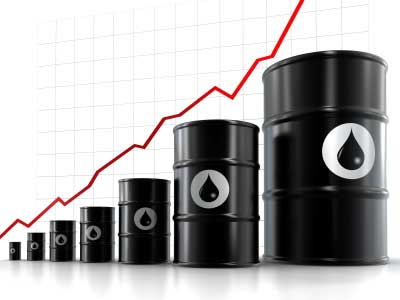Future oil shock

Let us now develop some scenarios to see how oil prices may change in case Iran is attacked and it disrupts or closes the Strait of Hormuz. The world economy is sluggish, so there is no great demand of oil. There is an adequate supply (or over supply) of crude oil and refined products. The USA and IEA countries have large strategic oil storage – so theoretically we should not see a 300% or 400% price rise. However, when oil supply is threatened ‘great anxiety follows, a herd mentality takes over as people and nations scramble for more certain sources’.[1] And in the modern economy we have speculators, who would be gangbusters ‘further driving up the price’.60 We have also noted that there is limited spare refining capacity; there is no real alternate route for the Strait of Hormuz. There is school of thought that says any price increase should be for a limited time as Iran may think it is in their best interest not to prolong any ‘crisis’.
We assume crude oil price increase by a factor of 1.5, 2 and 2.5 in three different scenarios. In scenario 1, the crude oil price will increase from current US$110/bbl to US$165/bbl (higher than 2008, pre GFC high price level). According to OIL-PRICE.NET (www.oil-price.net) in the event of a blockade, the crude oil price will increase by US$50/bbl, which is very similar to our scenario 1.
In scenario 2, it will go up to US$220/bbl, and in scenario 3, it can be in the very scary territory of US$275/bbl!
As we have seen in the long-term forecast section that EIA and IEA predict that the crude oil price will be US$200/bbl, and US$247/bbl in 2035 in their high scenario. It means that we may get a dose of 2035 in 2014 in case of a new Middle East war! (We are not discussing finer points of CPI’s for 22 or 23 years, real or nominal value.)
 Impacts of an astronomically high crude oil price on a fragile global economy will be devastating. It will further slowdown the economies, reduce demand and investment and we may have another recession. According to the IMF ‘The effects of major supply disruptions can be particularly damaging under current conditions’.[2]
Impacts of an astronomically high crude oil price on a fragile global economy will be devastating. It will further slowdown the economies, reduce demand and investment and we may have another recession. According to the IMF ‘The effects of major supply disruptions can be particularly damaging under current conditions’.[2]
In March 2012, The Financial Times[3] reported an estimate by Goldman Sachs that a 10% rise in crude oil price would lower US GDP by 0.2% after one year and by 0.4% after two. In the EU, it is also 0.2% in the first year but no further reduction after that.
In a research note in March 2012, PJK International[4] predicted that in the event of an Israeli attack on Iran, closure of the Strait of Hormuz, the blocking of a transit route of a fifth of the world’s oil supply, intervention by the US Fifth Fleet and the inability of OPEC members to meet the shortfall, will cause the oil price to skyrocket to US$200/bbl (which is similar to our scenario 2). According to this report, current drivers of the world economy, China and India, because of their dependence on Iranian oil, will ‘fall into recession’. Fragile USA and EU economies will be ‘dragged along into economic depression’. It also forecasts that after the initial price peak, oil price will plunge to US$50/bbl.
This scenario has historical precedents. The price of WTI peaked[5] in July 2008 to US$145/bbl, but within six months it bottomed out at US$30/bbl in late December 2008. Plummeting oil prices were due to the Global Financial Crisis (GFC), which originated in the USA, with the stock market crash and consequent industrial downturn lowering oil demand.
‘Higher crude oil prices directly affect the cost of gasoline, home heating oil, manufacturing and electric power generation. How much? According to the EIA[6], 96% of transportation relies on oil, 43% of industrial product, 21% of residential and commercial, and (only) 3% of electric power. However, if oil prices rise, then so does the price of natural gas, which is used to fuel 14% of electric power generation, 73% of residential and commercial, and 39% of industrial production.’
A lot of discussion and commentaries have been made about Iran’s reaction to the attack, but not much has been said about its allies in the region (e.g. Iraq, Syria, and Hezbollah in Lebanon, the Shia population in Bahrain and in the oil-rich Eastern Province of Al-Qatif of Saudi Arabia) and their potential responses. Iraq can take the side with Iran in any conflict; Syria may get involved in the conflict to divert attention from its internal woes; the Shia population can take streets in Bahrain and Saudi Arabia; and Hezbollah can fire missiles in the direction of Israel.
Conclusion:
It is very difficult to say if Israel is just posturing or it has the real intention to attack Iran. On the other hand, it is uncertain if Iran will carry out its threat to close down the Strait of Hormuz in case of an attack on its soil. What is clear is that impacts of any attack on Iranian nuclear facilities will be enormous from financial, political and regional stability points of view.
Source: UNBConnect









